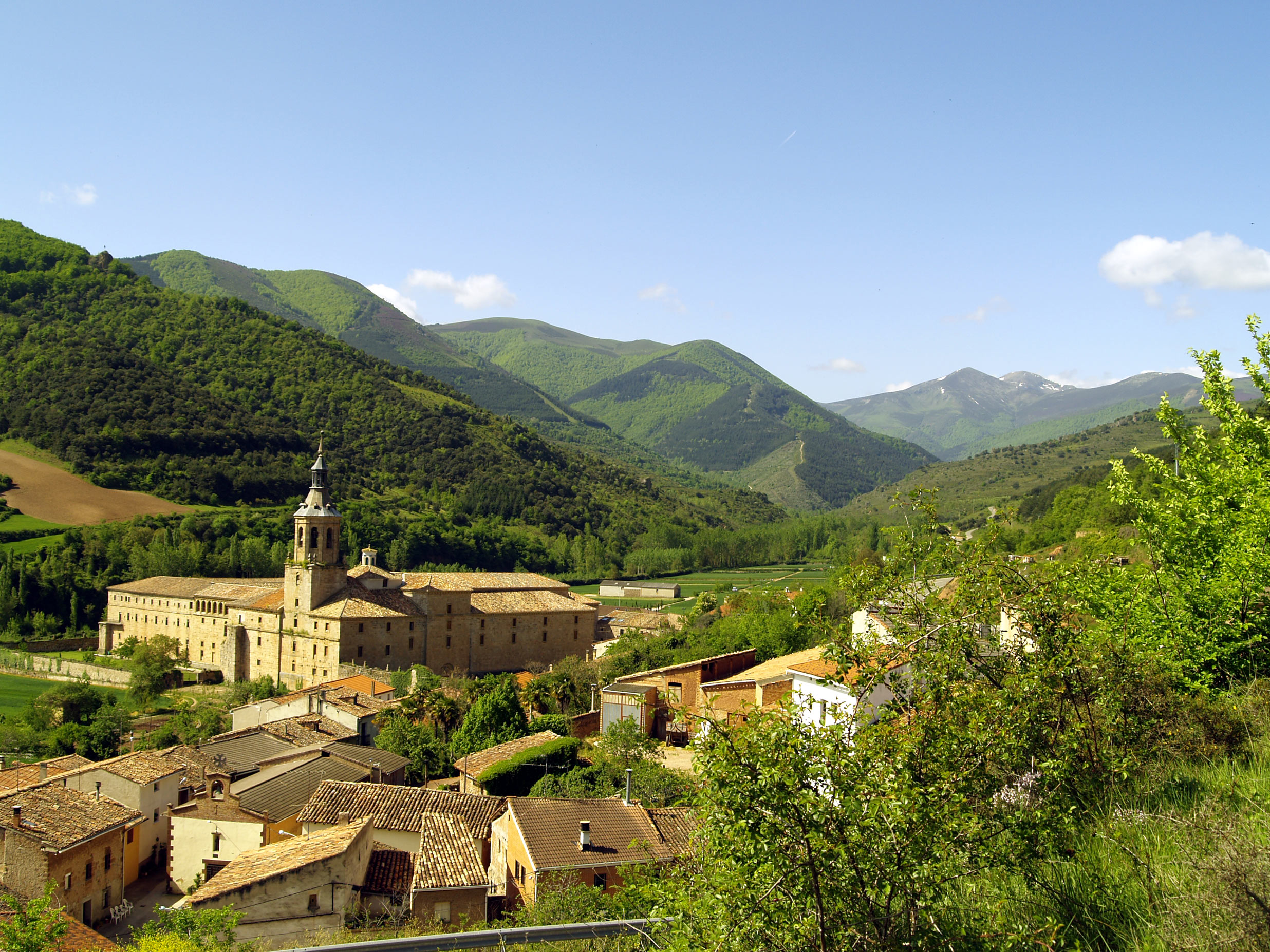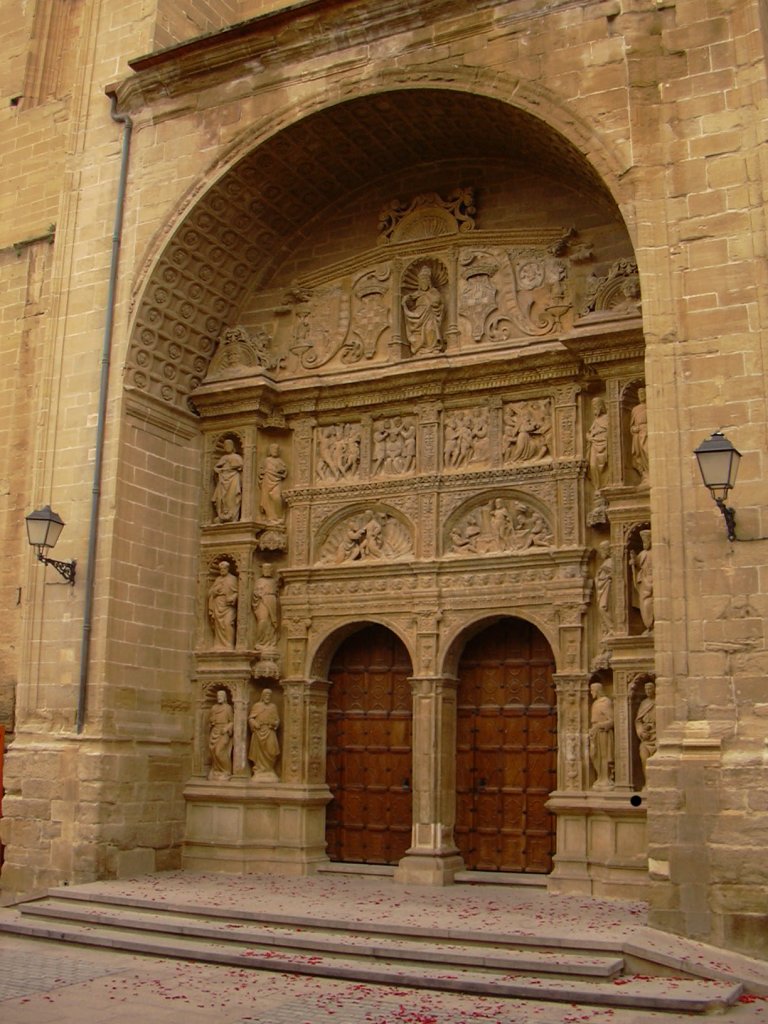|
Bilibio
Bilibio, also known as ''Haro la Vieja'', was a village in northern Spain located on the northern slope of the Cliffs of Bilibio, where the Ebro River enters La Rioja at Las Conchas in municipality of Haro. San Felices de Bilibio, the teacher of Emilian of Cogolla ] Saint Aemilian (; (in Latin ''Emilianus'' or ''Aemilianus'') (12 November 472 – 11 June 573) is an Iberic saint, widely revered throughout Spain, who lived during the age of Visigothic rule. Life According to his '' Vita'', written by ..., lived and died near the town. Today the area where it was located is known as the Páceta estate, owned by Bodegas Bilbainas. {{Spain-geo-stub La Rioja (Spain), ... [...More Info...] [...Related Items...] OR: [Wikipedia] [Google] [Baidu] |
Emilian Of Cogolla
] Saint Aemilian (; (in Latin ''Emilianus'' or ''Aemilianus'') (12 November 472 – 11 June 573) is an Iberic saint, widely revered throughout Spain, who lived during the age of Visigothic rule. Life According to his '' Vita'', written by Braulio, the bishop of Caesaraugusta (modern Zaragoza) roughly a hundred years after the saint's death, Aemilian was born in Vergaja, which is identified with Berceo in La Rioja, where he was a shepherd. Aemilian had a religious experience, perhaps around the age of twenty, which led him to decide to dedicate himself to God's service. He sought out an experienced hermit in Bilibio, Felix (more usually known by the Spanish form of his common name, ''San Felices''), where Aemilian lived for a number of years. After leaving his teacher, Aemilian lived as a hermit (perhaps even a gyrovagus) in the mountains or on the historic Roman road which became the Camino de Santiago. Didymus the Bishop of Tarazona ordained Aemilian and appointed h ... [...More Info...] [...Related Items...] OR: [Wikipedia] [Google] [Baidu] |
Ebro
, name_etymology = , image = Zaragoza shel.JPG , image_size = , image_caption = The Ebro River in Zaragoza , map = SpainEbroBasin.png , map_size = , map_caption = The Ebro river basin , pushpin_map = , pushpin_map_size = , pushpin_map_caption= , subdivision_type1 = Country , subdivision_name1 = Spain , subdivision_type2 = Region , subdivision_name2 = Cantabria, Castile and León, Basque Country (autonomous community), La Rioja, Navarre, Aragon, Catalonia, Valencian Community , subdivision_type3 = , subdivision_name3 = , length = , width_min = , width_avg = , width_max = , depth_min = , depth_avg = , depth_max = , discharge1_location= mouth , discharge1_min = , discharge1_avg = , discharge1_max = , source1 = , source1_location = Fontibre, Cantabria, Spain , source1_ ... [...More Info...] [...Related Items...] OR: [Wikipedia] [Google] [Baidu] |
La Rioja (Spain)
La Rioja () is an autonomous community and province in Spain, in the north of the Iberian Peninsula. Its capital is Logroño. Other cities and towns in the province include Calahorra, Arnedo, Alfaro, Haro, Santo Domingo de la Calzada, and Nájera. It has an estimated population of 315,675 inhabitants (INE 2018), making it the least populated autonomous community of Spain. It covers part of the Ebro valley towards its north and the Iberian Range in the south. The community is a single province, so there is no County Council, and it is organized into 174 municipalities. It borders the Basque Country (province of Álava) to the north, Navarre to the northeast, Aragón to the southeast (province of Zaragoza), and Castilla y León to the west and south (provinces of Burgos and Soria). The area was once occupied by pre-Roman Berones, Pellendones and Vascones. After partial recapture from the Muslims in the early tenth century, the region became part of the Kingdom of Pamplona, l ... [...More Info...] [...Related Items...] OR: [Wikipedia] [Google] [Baidu] |
Haro, La Rioja
Haro () is a town and municipality in the northwest of La Rioja province in northern Spain. It produces red wine, and hosts the annual Haro Wine Festival. Its architectural heritage includes the plateresque main entrance of the Church of Santo Tomás, the work of Felipe Vigarny, numerous palaces, and the old town, which was declared a Historic-Artistic Site in 1975. Haro was the first town in Spain to have electric street lighting. History There are several theories about the founding of Haro, though the most realistic theory is that of Domingo Hergueta, who argued that before the town, there was a lighthouse ( es, faro) near the village of Cerro de la Mota which illuminated the mouth of the Ebro river. The town was named for the lighthouse, and ''Faro'' later evolved into ''Haro''. During the Roman rule of Hispania, a fort called Castrum Bibilium was built in the cliffs of Bibilio. The first mention of Haro dates back to the year 1040, in a document of king García Sánchez I ... [...More Info...] [...Related Items...] OR: [Wikipedia] [Google] [Baidu] |


